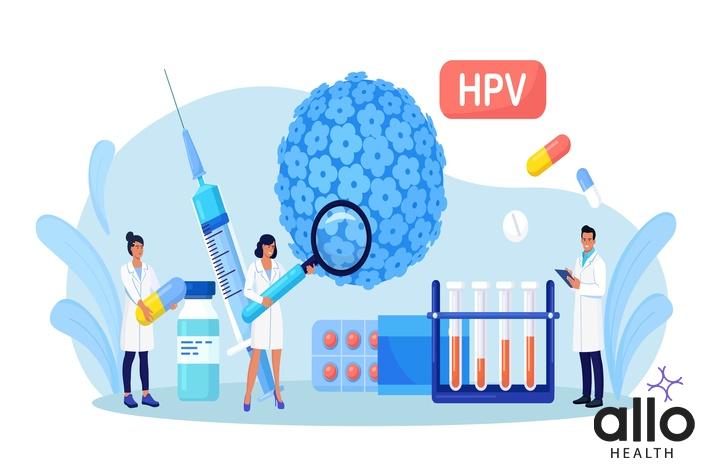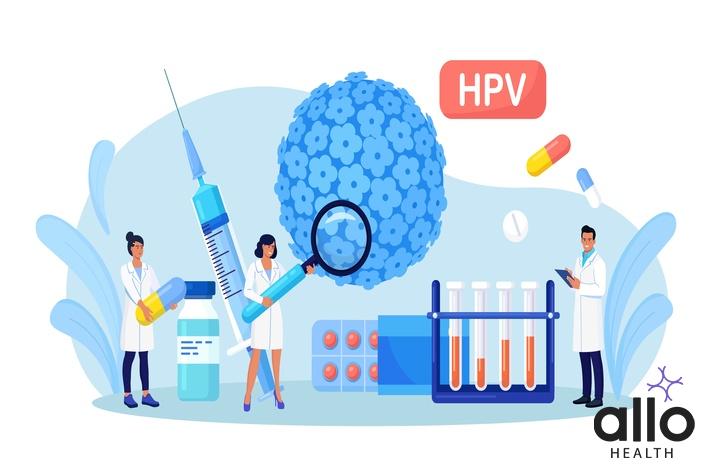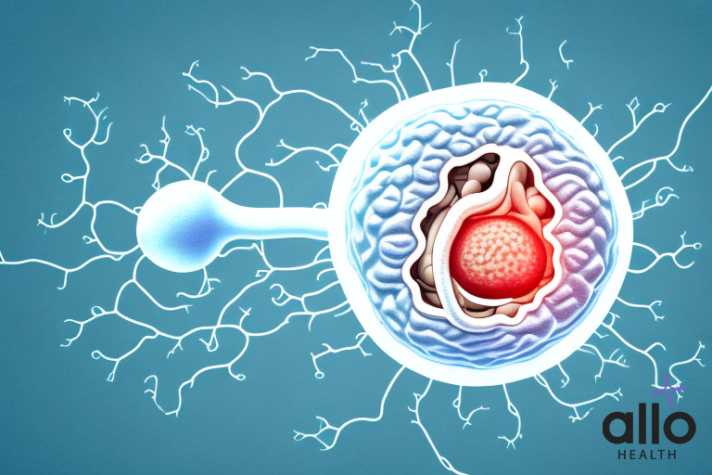Does HPV Cause Frequent Urination?

Allo Health is dedicated to personalized well-being, offering support and trusted information tailored to individual health goals. The platform emphasizes human-generated content, led by a distinguished medical team of experts, including physicians and sexual health specialists. Their commitment to credibility involves rigorous fact-checking, authoritative research, and continuous updates to ensure accurate, up-to-date information. Allo Health's unique approach goes beyond conventional platforms, providing expert-led insights and a continuous commitment to excellence, with user feedback playing a crucial role in shaping the platform's authoritative voice.

Dr. Raj. R holds an undergraduate medical degree from the Philippines, and has a bachelors background in Psychology. His experience working in the field of urology further brought his interest forward in working towards his passion of understanding the science of attraction, intimacy, sex and relationships. A key motto he practices by remains unprejudiced and non-judgemental care.
Why This Was Upated?
Our experts continually monitor the health and wellness space, and we update our articles when new information became available.
Updated on 10 April, 2024
- Article was updated as part of our commitment to diversity, equity, and inclusion.

"The following blog article provides general information and insights on various topics. However, it is important to note that the information presented is not intended as professional advice in any specific field or area. The content of this blog is for general educational and informational purposes only.
Book consultation
The content should not be interpreted as endorsement, recommendation, or guarantee of any product, service, or information mentioned. Readers are solely responsible for the decisions and actions they take based on the information provided in this blog. It is essential to exercise individual judgment, critical thinking, and personal responsibility when applying or implementing any information or suggestions discussed in the blog."
Human papillomavirus (HPV) is a common sexually transmitted infection that affects both men and women. While HPV is mostly associated with genital warts and certain types of cancers, some people may experience urinary symptoms as a result of having HPV. In this article, we’ll explore the connection between HPV and urinary issues, including frequent urination, and what you can do to manage them.
Understanding HPV: A Comprehensive Guide to Risks, Prevention, and Treatment
Human Papillomavirus (HPV) stands as the leading sexually transmitted infection (STI) in the United States, deeply impacting sexually active individuals. The Centers for Disease Control and Prevention (CDC) reports that at least 50% of these individuals will contract HPV at some stage in their lives.
Types of HPV and Risks
- Over 100 Varieties: HPV encompasses a broad spectrum, with approximately 40 types affecting genital areas of both genders.
- Low-risk HPV: These types may lead to genital warts or be entirely asymptomatic, posing minimal cancer risk.
- High-risk HPV: Associated with an increased likelihood of cancers, notably cervical cancer.
Transmission and Risk Factors
- Skin-to-Skin Contact: Primary transmission mode, including through all forms of sexual activity.
- Asymptomatic Spread: Individuals without visible symptoms can transmit HPV, highlighting its stealthy nature.
- Multiple Infections: It’s possible to be infected with several HPV types simultaneously.
- Increased Risk Factors: Early sexual activity, multiple partners, smoking, and compromised immune systems elevate infection risk.
Signs and Health Implications
- Often Asymptomatic: Many HPV infections do not manifest visibly but can lead to significant health issues.
- Genital Warts: Caused by low-risk HPV types.
- Cancer Risks: High-risk HPV types are linked to cervical and other cancers.
Detection and Screening
- HPV Testing: Specific tests can identify HPV presence, though they are not routinely used for all women.
- Pap Tests: Critical for detecting cervical changes that could lead to cancer, recommended regularly for women over 21.
Treatment Approaches
- Low-Risk HPV: Treatments focus on managing genital warts, without necessarily eradicating the virus.
- Various Treatments: Include topical medications, surgical removal, and other procedures.
- High-Risk HPV: Emphasizes removing precancerous cells to prevent cervical cancer.
- Surgical Interventions: Aim to preserve the cervix while eliminating abnormal cells.
Long-Term Implications
- Persistence of High-Risk HPV: Can lead to cervical cancer if not addressed.
- Symptoms of Advanced Cervical Cancer: Include unusual vaginal discharge, abnormal vaginal bleeding, and pelvic pain.
Preventive Measures
- HPV Vaccination: Offers protection against the majority of cervical cancers and genital warts.
- Recommended Age: Vaccination is advised for individuals aged 9 to 26, with emphasis on early vaccination.
- Safer Sex Practices: Reducing partner numbers and consistent condom use, though not fully protective against HPV.
Considerations During Pregnancy
- Impact on Pregnancy and Birth: Genital warts may alter in size but rarely complicate pregnancy.
- Treatment During Pregnancy: This should be discussed with a healthcare provider.
Through consistent screening, vaccination, and safer sex practices, it’s possible to significantly reduce the health impacts of HPV, including the prevention of cervical cancer and other HPV-related diseases.

The Connection Between HPV and Urinary Symptoms
The connection between HPV (Human Papillomavirus) and urinary symptoms encompasses several aspects, ranging from the presence of genital warts affecting urination to more serious conditions like bladder cancer and interstitial cystitis. Here are some subpoints to elaborate on these connections:
- Genital Warts and Urination:
- Location and Symptoms: Genital warts can form in and around the urethra, leading to irritation and inflammation. This can result in symptoms such as a frequent urge to urinate or discomfort during urination.
- Treatment and Management: Treatments for genital warts include topical medications, surgical removal, and other therapies aimed at reducing wart size and alleviating symptoms.
- HPV and Urinary Tract Cancers:
- Association with Bladder Cancer: Certain high-risk strains of HPV are linked to an increased risk of bladder and other urinary tract cancers. These strains can lead to changes in urinary tract cells, potentially developing into cancer over time.
- Symptoms and Detection: Symptoms of urinary tract cancers include blood in the urine, pain during urination, and a frequent need to urinate. Early detection through regular medical check-ups can improve treatment outcomes.
- HPV and Interstitial Cystitis:
- Potential Role in Inflammation: While the exact cause of interstitial cystitis remains unknown, HPV infection has been suggested as a potential contributing factor due to its ability to cause inflammation in the bladder.
- Symptoms and Treatment Options: This condition is characterized by chronic bladder and pelvic pain, as well as a frequent need to urinate. Treatment focuses on managing symptoms, including pain management strategies, bladder instillations, and dietary modifications.
- Prevention and Risk Reduction:
- Safe Sexual Practices: Using condoms and dental dams during oral, vaginal, and anal sex can significantly reduce the risk of HPV transmission.
- Regular STI Screenings: Regular screenings for STIs, including HPV, can help in early detection and management of the infection.
- HPV Vaccination: The HPV vaccine is highly effective in preventing infection with the most common high-risk and low-risk HPV types associated with genital warts and cancers.
- Importance of Awareness and Education:
- Understanding Transmission: HPV is one of the most common sexually transmitted infections, and awareness of its transmission modes is crucial for prevention.
- Recognizing Symptoms: Educating individuals about the potential urinary symptoms associated with HPV can prompt earlier medical consultation and treatment.
By addressing these subpoints, we highlight the multifaceted ways in which HPV can affect the urinary system and underscore the importance of preventive measures and early intervention in managing HPV-related urinary symptoms.
Understanding the Basics of HPV and Its Impact on Your Body
HPV is a viral infection that is spread through skin-to-skin contact, usually during sexual activity. There are many different strains of HPV, and while some cause genital warts, others are linked to certain types of cancer. Most people who become infected with HPV will not develop any symptoms, and the infection will go away on its own within a few months. However, in some cases, the infection can persist and lead to health problems down the line.
It is important to note that HPV can be prevented through vaccination. The HPV vaccine is recommended for both males and females and is most effective when given before sexual activity begins. It is also important to practice safe sex by using condoms and limiting sexual partners to reduce the risk of contracting HPV and other sexually transmitted infections.
Common Types of HPV and Their Symptoms
There are more than 100 different types of HPV, and each type can cause different symptoms. Some of the most common types of HPV include:
- HPV 6 and 11, which are responsible for most cases of genital warts
- HPV 16 and 18, which can cause certain types of cancer, including cervical, anal, and throat cancer
- HPV 31, 33, 45, 52, and 58, which are also linked to certain types of cancer
If you have HPV, you may not experience any symptoms at all. However, if you do develop symptoms, they may include genital warts, abnormal cervical cells, or certain types of cancer.
It is important to note that HPV can be transmitted through sexual contact, including vaginal, anal, and oral sex. Additionally, HPV can be passed from a mother to her baby during childbirth.
Prevention methods for HPV include getting vaccinated, practicing safe sex, and getting regular screenings for cervical cancer. If you suspect that you may have HPV or have been exposed to it, it is important to speak with a health care provider for proper diagnosis and treatment.
How the Human Papillomavirus Spreads and Affects the Body
HPV is primarily spread through skin-to-skin contact during sexual activity. It can be transmitted even if no symptoms are present, and condoms may not provide complete protection against the virus.
Once HPV infects the body, it can lay dormant for months or even years before causing any symptoms. In some cases, the virus may go away on its own without causing any lasting damage. However, in other cases, the virus can lead to health problems such as genital warts or certain types of cancer.
The Link Between HPV and Urinary Tract Infections
While HPV itself does not cause urinary tract infections (UTIs), having HPV can increase your risk of developing a UTI. This is because HPV can cause inflammation in the urogenital tract, which includes the bladder and urethra, making it easier for bacteria to enter and cause an infection.
Symptoms of a UTI may include a frequent need to urinate, pain or burning during urination, and cloudy or strong-smelling urine. If you suspect that you have a UTI, it’s important to seek medical attention as soon as possible to prevent complications.
It’s important to note that practicing good hygiene can also help reduce your risk of developing a UTI. This includes wiping from front to back after using the bathroom, urinating before and after sexual activity, and staying hydrated by drinking plenty of water. Additionally, using condoms during sexual activity can also help prevent the spread of HPV and reduce the risk of developing a UTI.
Possible Causes of Frequent Urination in Women with HPV
In women, frequent urination may be caused by several factors related to HPV. These can include:
- Genital warts in the urethra that cause irritation and inflammation
- Inflammation of the cervix or uterus caused by HPV
- Bladder cancer or other urinary tract cancers linked to HPV
If you’re experiencing frequent urination or other urinary symptoms and have been diagnosed with HPV, it’s important to discuss these symptoms with your doctor to determine the underlying cause and identify any necessary treatments.
Another possible cause of frequent urination in women with HPV is a urinary tract infection (UTI). HPV can weaken the immune system, making it easier for bacteria to infect the urinary tract. Symptoms of a UTI include painful urination, cloudy or strong-smelling urine, and lower abdominal pain.
Additionally, some women with HPV may experience overactive bladder syndrome, which can cause frequent urination as well as sudden urges to urinate. This condition can be caused by nerve damage or muscle weakness in the bladder and may require medication or lifestyle changes to manage.
The Effect of HPV on Men’s Bladder Health and Urination Frequency
Men with HPV may also experience urinary symptoms such as frequent urination, although these symptoms are less common in men than they are in women. In men, HPV can cause genital warts on the penis, scrotum, or anus, which can lead to irritation and inflammation that affects the urinary system.
In addition, certain types of HPV are linked to penile cancer, which can cause urinary symptoms such as pain during urination or a frequent need to urinate. If you’re experiencing any urinary symptoms and have been diagnosed with HPV, it’s important to discuss these symptoms with your doctor to determine the underlying cause and identify any necessary treatments.
It’s important to note that HPV can also affect men’s sexual health. HPV can be transmitted through sexual contact and can cause genital warts or lesions on the penis or anus. These warts can be painful and may affect sexual function, leading to discomfort or difficulty during intercourse.
Furthermore, HPV can also increase the risk of developing other types of cancers in men, such as anal cancer or oropharyngeal cancer. Men need to receive regular check-ups and screenings to detect any potential health issues related to HPV.
Treatment Options for Frequent Urination Caused by HPV
If you’re experiencing frequent urination or other urinary symptoms as a result of having HPV, several treatment options may be recommended by your healthcare provider. These can include:
- Topical or oral medications to treat genital warts
- Antibiotics to treat UTIs or other infections
- Surgery or other treatments for bladder cancer or other urinary tract cancers
- Behavioral therapies, such as pelvic floor exercises, to help manage urinary symptoms
It’s important to work closely with your doctor to develop a treatment plan that meets your individual needs and addresses any underlying health issues related to HPV and your urinary system.
In addition to these treatment options, your healthcare provider may also recommend regular check-ups and screenings to monitor your urinary health and detect any potential issues early on. It’s important to maintain good hygiene practices, such as washing your hands regularly and avoiding sharing personal items, to prevent the spread of HPV and other infections that can contribute to urinary symptoms. Your doctor may also recommend lifestyle changes, such as reducing caffeine and alcohol intake, to help manage your symptoms and improve your overall urinary health.
Preventative Measures to Reduce Your Risk of Contracting HPV and Associated Conditions
The best way to reduce your risk of contracting HPV and developing associated health issues is to take preventative measures. These may include:
- Getting vaccinated against HPV
- Using condoms or other barriers during sexual activity
- Getting regular screenings for HPV and related cancers
- Avoiding tobacco use, which can increase your risk of bladder cancer
By taking these steps, you can help protect your health and reduce your risk of developing HPV-related urinary symptoms or other health issues.
In addition to the preventative measures listed above, there are other steps you can take to reduce your risk of contracting HPV and associated conditions. One important step is to maintain a healthy immune system through regular exercise, a balanced diet, and adequate sleep. A strong immune system can help your body fight off infections, including HPV.
It is also important to have open and honest communication with your sexual partners about your sexual health. This can include discussing your HPV vaccination status, previous sexual partners, and any symptoms or concerns you may have. By being proactive and informed, you can help protect yourself and your partners from HPV and other sexually transmitted infections.
Conclusion
Understanding the link between HPV and urinary symptoms is crucial for effective management and prevention. HPV, a common sexually transmitted infection, can lead to issues like genital warts, certain cancers, and urinary symptoms including frequent urination. Preventive measures such as HPV vaccination, safe sex practices, and regular screenings are key to reducing HPV transmission and its complications. If you experience urinary symptoms and are aware of an HPV infection, consult with a healthcare provider for appropriate diagnosis and treatment. Emphasizing preventive care, awareness, and early intervention can mitigate the impact of HPV on urinary health and overall well-being.
Most Asked Questions
-
Can HPV cause frequent urination?
Yes, HPV can indirectly cause frequent urination, especially if it leads to the development of genital warts around the urethra, inflammation, or is linked to certain urinary tract cancers.
-
How does HPV affect the urinary system?
HPV can affect the urinary system by causing genital warts in or around the urethra, leading to irritation and discomfort. Certain high-risk HPV strains are also associated with an increased risk of urinary tract cancers, such as bladder cancer.
-
Can HPV lead to urinary tract infections (UTIs)?
While HPV itself does not cause UTIs, the presence of HPV can increase the risk of developing a UTI due to inflammation in the urogenital tract, making it easier for bacteria to enter and cause an infection.
-
What are the symptoms of HPV-related urinary issues?
Symptoms may include frequent urination, discomfort or pain during urination, blood in the urine, and, in the case of genital warts, visible warts around the genital area or urethra.
-
How are HPV-related urinary symptoms treated?
Treatment may involve managing the symptoms of genital warts with topical or oral medications, treating UTIs with antibiotics, and addressing any related cancers with appropriate surgical interventions or therapies.






































